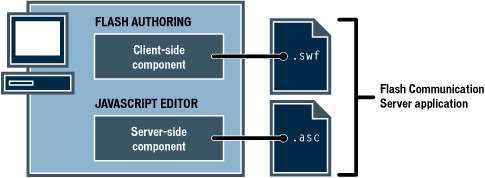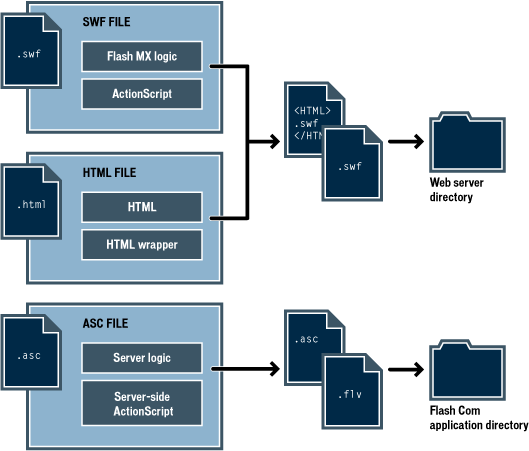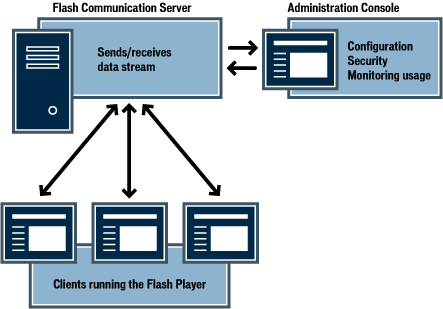Flash Communication Server architecture overview > Workflow for creating and deploying applications
Flash Communication Server architecture overview > Workflow for creating and deploying applications |
Workflow for creating and deploying applications
You use the Flash MX authoring tool to create your application's client component, which runs in Flash Player. The Flash movie provides the application's user interface, and also contains ActionScript for connecting to, and managing interactions with, Flash Communication Server. For more information on Client-Side Communication ActionScript, see the Client-Side Communication ActionScript Dictionary.
The server component consists, minimally, of an application folder you've created on the computer that's running Flash Communication Server. This folder can optionally contain Server-Side Communication ActionScript API (ASC) files that enable control of shared state information, provide the logic for mediating real-time interactions among multiple users, or communicate with external resources, if necessary.

You can write ASC files in any text editor, or JavaScript editor. For information on server-side ActionScript, see the Server-Side Communication ActionScript Dictionary.
Deploying and managing applications
To deploy an application, the client and server files need to be published to their proper locations. For applications deployed over the web, client files—the Flash movie (SWF) and any required HTML wrapper code—need to be published to a directory on a web server.
Note: Flash client movies could just as easily be sent to user as an email attachment. Flash Communication Server applications communicate over RTMP, not through a web server, so a web server is not required.
The server files, including any ASC files, recorded stream (FLV) files and other server-side resource files, are published to the registered application directory you've defined on the server.

For more information on registering an application directory, see Getting Started.
If you're an administrator, you'll use the Administration Console to configure Flash Communication Server, set up system security, monitor usage, start and stop the server, and add users. For more information on administration tasks for Flash Communication Server, see Managing Flash Communication Server Help.

![]()